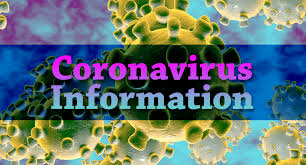
Coronavirus Health Advice - James Robb, MD FCAP
3-5-20
1. If you have a runny nose and sputum, you have a common cold
2. #Coronavirus pneumonia is a dry cough with no runny nose.
3. This new virus is not heat-resistant and will be killed by a temperature of just 26/27 Celsius (79/80 Fahrenheit) degrees. It hates the sun.
4. If someone sneezes with it, it takes about 10 feet before it drops to the ground and is no longer airborne.
5. If it drops on a metal surface it will live for at least 12 hours - so if you come into contact with any metal surface - wash your hands as soon as you can with a bacterial soap.
6. On fabric it can survive for 6-12 hours. Normal laundry detergent will kill it.
7. Drinking warm water is effective for all viruses. Try not to drink liquids with ice.
8. Wash your hands frequently as the virus can only live on your hands for 5-10 minutes, but - a lot can happen during that time - you can rub your eyes, pick your nose unwittingly and so on.
9. You should also gargle as a prevention. A simple solution of salt in warm water will suffice.
10. Can't emphasize enough - drink plenty of water!
THE #SYMPTOMS
1. It will first infect the throat, so you'll have a sore throat lasting 3/4 days
2. The virus then blends into a nasal fluid that enters the trachea and then the lungs, causing pneumonia. This takes about 5/6 days further.
3. With the pneumonia comes high fever and difficulty in breathing.
4. The nasal congestion is not like the normal kind. You feel like you're drowning. It's imperative you then seek immediate attention.
AND:
As some of you may recall, when I was a professor of pathology at the University of California San Diego, I was one of the first molecular virologists in the world to work on coronaviruses (the 1970s). I was the first to demonstrate the number of genes the virus contained. Since then, I have kept up with the coronavirus field and its multiple clinical transfers into the human population (e.g., SARS, MERS), from different animal sources.
The current projections for its expansion in the US are only probable, due to continued insufficient worldwide data, but it is most likely to be widespread in the US by mid to late March and April.
Here is what I have done and the precautions that I take and will take. These are the same precautions I currently use during our influenza seasons, except for the mask and gloves:
1) NO HANDSHAKING! Use a fist bump, slight bow, elbow bump, etc.
2) Use ONLY your knuckle to touch light switches. elevator buttons, etc.. Lift the gasoline dispenser with a paper towel or use a disposable glove.
3) Open doors with your closed fist or hip - do not grasp the handle with your hand, unless there is no other way to open the door. Especially important on bathroom and post office/commercial doors.
4) Use disinfectant wipes at the stores when they are available, including wiping the handle and child seat in grocery carts.
5) Wash your hands with soap for 10-20 seconds and/or use a greater than 60% alcohol-based hand sanitizer whenever you return home from ANY activity that involves locations where other people have been.
6) Keep a bottle of sanitizer available at each of your home's entrances. AND in your car for use after getting gas or touching other contaminated objects when you can't immediately wash your hands.
7) If possible, cough or sneeze into a disposable tissue and discard. Use your elbow only if you have to. The clothing on your elbow will contain infectious virus that can be passed on for up to a week or more!
What I have stocked in preparation for the pandemic spread to the US:
1) Latex or nitrile latex disposable gloves for use when going shopping, using the gasoline pump, and all other outside activity when you come in contact with contaminated areas.
Note: This virus is spread in large droplets by coughing and sneezing. This means that the air will not infect you! BUT all the surfaces where these droplets land are infectious
